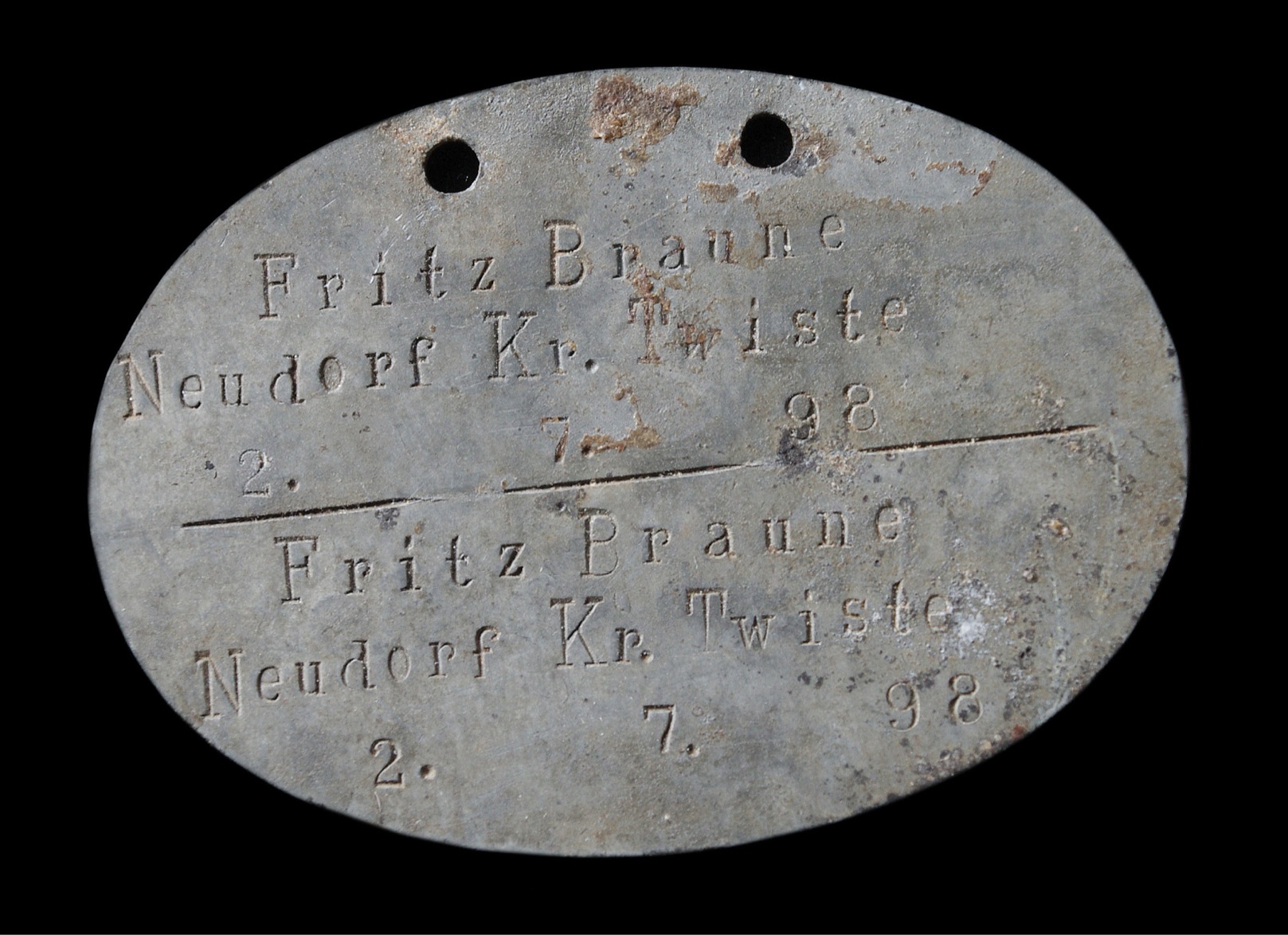18
German identity disc

IDENTITY DISCS HAVE not always been part of the soldier’s traditional accoutrements. In the American Civil War, combatants carried small pieces of paper with their names on them in order that they should receive a named grave if killed, and later bought engraved badges that could be attached to their uniforms. Yet few nations thought clearly about the importance of being able to identify their dead, if only as part of an accounting procedure, until the latter part of the nineteenth century. The first to do so were the Prussians, who in 1870 issued a simple rectangular tag suspended by a cord that was marked with the regimental details and regimental numbers. This tag was specified in the Prussian regulations of the Army Medical Corps, with the simple aim of identifying the dead or wounded. Other nations followed suit, slowly: France in 1881; Austria and Russia in 1902; Britain in 1907.
The choices available to these nations were many. Most went for a tag or disc that was suspended from the neck on a cord. These options were understandable; the grim reality of war was that with so many awful artillery wounds, limbs would be wrenched from bodies, negating the use of wrist bracelets. During war conditions, the fear that a soldier’s body could be left unidentified on the field of battle meant that men more often than not made their own wrist bracelets, or commissioned them from jewelers; and in 1918 the French finally adopted an official pattern that was intended to be worn around the wrist. The Austrians had a complex metal capsule—the Legitimationkapsel—which contained a paper insert with the soldier’s details, but which was intended to be clipped to the inside of the trouser pocket. This was copied by their direct enemies, Italy, when they joined the Allies in 1915.
In this way, patterns varied considerably from nation to nation. The British used three different types: a single stamped aluminum disc, which carried the name, rank, serial number, unit details, and religion issued on mobilization in 1914, before being replaced by a single red fiber disc. Once this single disc was removed from the body, as stipulated in the 1914 Field Service Regulations, the chances of identification were much reduced. As such, in August 1916, a two-disc system was evolved, the discs themselves carrying the same information as before, in duplicate, but this time stamped on compressed fiberboard discs: a green octagonal one which, it was intended, would stay with the body, and a red disc which would be taken as part of the accounting procedure. Both were to be worn on a string around the neck—but as this often became dirty and clammy, some soldiers carried the discs separately in their haversack or pack. All were to be given the brutally frank name “cold meat tickets” (resembling as they did the tags used in butchers” shops); postwar, the term “dog tag,” from American usage, became commonplace.
But our example is German, of a pattern that was issued in 1916 to all soldiers. Stamped in simple zinc alloy, this disc was worn around the neck on a cord that was sometimes in the colors of the state; typical was the white and black of Prussia. The details of its owner are stamped twice, one above the other. There is a simple reason for this: the disc could be broken along its center line, leaving one half with the body, the other removed for “accounting” purposes. Fritz Braune came from Neudorf in Hesse and was born on July 2, 1898. He was just eighteen years old when he joined his regiment, the Grenadier-Regiment König Frederich 1 (4. Ostpreußisches) nr. 5. All these details are stamped on the tag, or Erkennungsmarke, that was carried by Grenadier Braune throughout his service in the field. And it saw some action: attached to the 36th Infanterie-Division, his regiment was pitched into the Somme battlefront on July 24, 1916, and would see action in all the major battles in 1917 before moving south to the Marne. Fritz survived; his disc remained intact. So many others are buried with their owners, periodically surfacing as the plows break the surface for cultivation; sad reminders of young lives lost.
